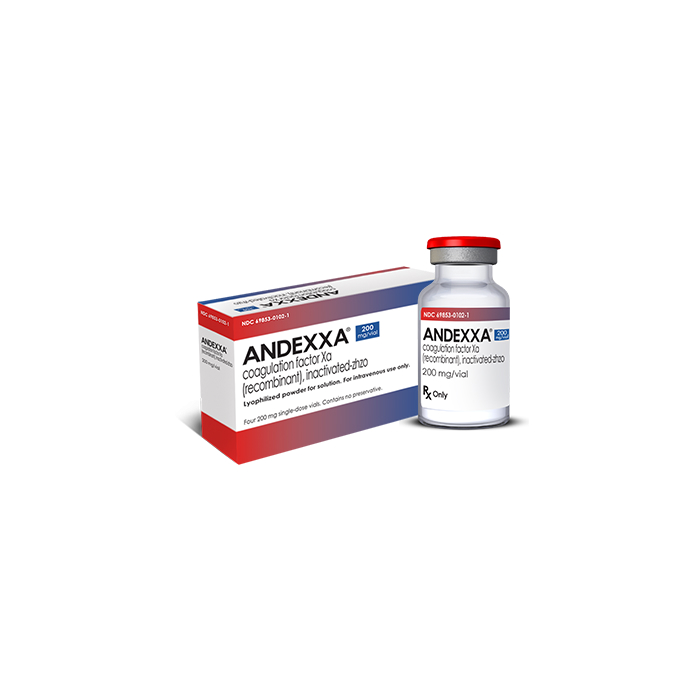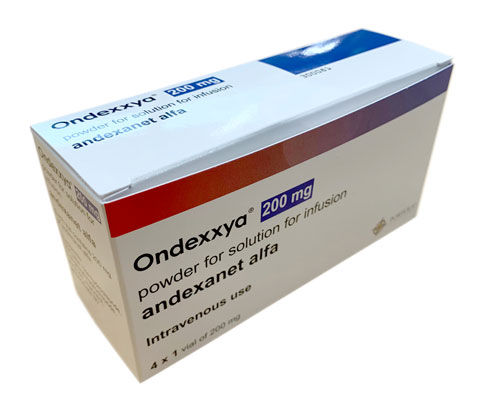New Thromboembolism treatments 2024
New Thromboembolism Treatments 2024
Thromboembolism is a serious medical condition that occurs when a blood clot, known as a thrombus, forms in the blood vessels and impedes the flow of blood. This clot can dislodge and travel through the bloodstream to become an embolus, potentially blocking blood vessels in critical areas such as the lungs (pulmonary embolism) or the brain (stroke). Risk factors for thromboembolism include prolonged immobility, certain medical conditions like atrial fibrillation or cancer, surgery, and genetic predispositions. Symptoms vary depending on the location of the clot but may include pain and swelling in the affected limb, shortness of breath, or neurological deficits. Prompt diagnosis and treatment are essential to prevent serious complications or death.
When considering treatment options for thromboembolism, anticoagulant medications are commonly prescribed to prevent further clot formation and to stop existing clots from growing. These medications, such as warfarin, heparin, and newer direct oral anticoagulants (DOACs) like dabigatran and rivaroxaban, work by interrupting the blood's clotting process. It is crucial for patients to work closely with their healthcare provider to determine the most appropriate medication, as factors like the type of thromboembolism, patient history, and potential drug interactions must be considered. In some cases, thrombolytic therapy may be used to dissolve clots, or surgical interventions such as thrombectomy may be necessary. Ongoing monitoring and possibly lifestyle modifications are important to manage the condition effectively and reduce the risk of recurrence.

Treatment options
Comparison of Treatment Options for Thromboembolism
| Treatment option | Estimated cost | Efficacy | Eligibility |
|---|---|---|---|
| Warfarin | $4 - $20 | High with regular monitoring | Most adults with thromboembolism |
| Direct Oral Anticoagulants (DOACs) | $300 - $400 | High | Adults without significant kidney impairment |
| Low Molecular Weight Heparin (LMWH) | $200 - $500 | High | Adults, including those with renal insufficiency |
| Fondaparinux | $100 - $200 | High | Adults with thromboembolism and low risk of bleeding |
| Unfractionated Heparin (UFH) | $50 - $100 | Moderate to High | Adults, especially those requiring rapid anticoagulation |
| Thrombolytics (e.g., Alteplase) | $2,000 - $5,000 | High for acute thromboembolism | Selected cases with severe thromboembolism |
| Andexxa (Andexanet alfa) | $22,500 - $45,000 | High for reversal of anticoagulation | Adults with life-threatening or uncontrolled bleeding on Factor Xa inhibitors |
| Ondexxya (Andexanet alfa) | $22,500 - $45,000 | High for reversal of anticoagulation | Adults with life-threatening or uncontrolled bleeding on Factor Xa inhibitors |
| Experimental Treatments (e.g., new oral anticoagulants) | Variable | Unknown | Patients enrolled in clinical trials |
Treatments options in detail
Anticoagulant Therapy
Anticoagulant therapy is the cornerstone of treatment for thromboembolism, which includes both deep vein thrombosis (DVT) and pulmonary embolism (PE). The most commonly used anticoagulants are warfarin, heparin, and direct oral anticoagulants (DOACs) such as rivaroxaban, apixaban, edoxaban, and dabigatran. Warfarin requires regular blood monitoring and dietary considerations, while DOACs offer more predictable pharmacokinetics and do not require routine monitoring. Heparin, including unfractionated heparin (UFH) and low molecular weight heparin (LMWH), is often used for initial management due to its rapid onset of action.
Thrombolytic Therapy
Thrombolytic therapy is used in cases of severe thromboembolism, such as massive PE or extensive DVT, where rapid clot resolution is necessary. Agents like alteplase, reteplase, or streptokinase are administered to dissolve clots. This treatment carries a higher risk of bleeding and is typically reserved for life-threatening situations or when rapid resolution of symptoms is critical.
Mechanical Thrombectomy and Catheter-Directed Thrombolysis
In certain cases of acute PE or DVT, mechanical thrombectomy or catheter-directed thrombolysis may be employed. These procedures involve the physical removal of the clot or the direct delivery of thrombolytic agents to the site of the clot. These techniques are often used when systemic thrombolysis is contraindicated or has failed.
Inferior Vena Cava (IVC) Filters
For patients who cannot receive anticoagulation due to contraindications or those who have recurrent embolic events despite adequate anticoagulation, an inferior vena cava (IVC) filter may be placed. This device is designed to prevent large clots from traveling to the lungs. However, IVC filters do not treat the clot itself and are typically used in conjunction with anticoagulation therapy.
Reversal Agents for Anticoagulation
In the event of life-threatening bleeding or the need for emergency surgery, reversal agents for anticoagulants may be necessary. Vitamin K and fresh frozen plasma can reverse the effects of warfarin, while protamine sulfate is used to neutralize heparin. For DOACs, specific reversal agents have been developed. Andexanet alfa (brand name Andexxa in the United States and Ondexxya in Europe) is a recombinant modified human factor Xa protein that can reverse the effects of factor Xa inhibitors like rivaroxaban and apixaban. Idarucizumab is a monoclonal antibody that specifically reverses the anticoagulant effect of dabigatran.
Long-Term Anticoagulation
After the initial treatment phase, patients may require long-term anticoagulation to prevent recurrent thromboembolism. The choice of anticoagulant and duration of therapy depend on the individual's risk factors, the presence of provoking factors for thromboembolism, and the risk of bleeding. Warfarin or DOACs are commonly used for long-term management.
Compression Stockings
For DVT, compression stockings are recommended to reduce the risk of post-thrombotic syndrome, a condition characterized by chronic pain, swelling, and skin changes in the affected limb. They are typically worn for a minimum of two years after a DVT diagnosis.
Experimental Treatments
Experimental treatments for thromboembolism include new anticoagulant drugs, gene therapy, and novel methods of clot removal or dissolution. These treatments are not yet approved by the FDA and are generally available only through clinical trials. Research continues to focus on improving the safety and efficacy of thromboembolic treatments, as well as on personalized medicine approaches that tailor treatment to the individual patient's risk profile.
Off-Label Use of Medications
Occasionally, medications may be used off-label for the treatment of thromboembolism. This means the medication is used in a manner not specified in the FDA's approved packaging label. Off-label use is legal and may be based on emerging evidence or clinical experience. Physicians may consider off-label use when standard treatments are not effective or are contraindicated. It is important to note that off-label use should only be done under the guidance of a healthcare provider with expertise in the treatment of thromboembolism.
Lifestyle Modifications
In addition to medical treatments, lifestyle modifications can play a role in the management of thromboembolism. Patients are often advised to maintain a healthy weight, stay physically active, and avoid prolonged periods of immobility. Smoking cessation is also important, as smoking increases the risk of blood clots.
Monitoring and Follow-Up
Regular monitoring and follow-up are essential components of thromboembolism treatment. For patients on warfarin, this includes periodic blood tests to measure the international normalized ratio (INR) to ensure the medication is effectively thinning the blood without increasing the risk of bleeding excessively. For patients on DOACs, regular follow-up appointments are important to assess for side effects and adherence to treatment. Additionally, any signs of recurrent DVT or PE should be promptly evaluated.
Conclusion
Treatment of thromboembolism is multifaceted and includes a range of pharmacological and non-pharmacological strategies. The choice of treatment is individualized based on the type and location of the thromboembolic event, the patient's risk factors, and the potential for bleeding. While anticoagulant therapy remains the mainstay of treatment, the development of new drugs and reversal agents, such as Andexxa and Ondexxya, continues to improve the safety and effectiveness of care for patients with thromboembolism.
Symptoms
Symptoms of Thromboembolism
Thromboembolism encompasses two related conditions: deep vein thrombosis (DVT) and pulmonary embolism (PE). The symptoms of these conditions can vary depending on the location and severity of the blood clot.
Symptoms of Deep Vein Thrombosis (DVT)
The most common symptoms of DVT occur in the leg and include pain or tenderness, often starting in the calf and possibly felt only when standing or walking. Swelling in one leg, often accompanied by warmth over the affected area, is also a typical symptom. The skin may appear red or discolored, and the veins near the skin's surface may become more visible.
Symptoms of Pulmonary Embolism (PE)
Pulmonary embolism is a potentially life-threatening condition that occurs when a clot breaks loose and travels to the lungs. The most common symptom of PE is sudden and unexplained shortness of breath. This may be accompanied by chest pain that may become worse when taking a deep breath, coughing, eating, or bending. The pain is often sharp and may lead to feelings of anxiety or a sense of impending doom. Other symptoms may include a rapid heart rate, lightheadedness or dizziness, and coughing up blood.
Additional Symptoms of DVT and PE
In addition to the primary symptoms, individuals with DVT may experience a feeling of warmth in the affected leg, red or discolored skin on the leg, and a feeling of heaviness in the leg. In cases of PE, symptoms can also include sweating, a rapid or irregular heartbeat, and fainting.
Less Common Symptoms of DVT
While less common, some individuals may experience symptoms such as localized swelling of the arm or neck if the thrombosis occurs in these areas. The skin may also feel tight or appear glossy in the area where the clot is present.
Less Common Symptoms of PE
Less frequently, individuals with a pulmonary embolism may experience symptoms such as wheezing, a low-grade fever, or a bluish discoloration of the skin (cyanosis) due to decreased oxygen levels in the blood. In some cases, the only signs of PE are subtle and may include unexplained mild fever or a slight cough.
Warning Signs and Complications
It is crucial to recognize the warning signs of thromboembolism as it can lead to serious complications. Complications of DVT may include post-thrombotic syndrome, which can cause long-lasting pain, swelling, and a feeling of heaviness in the affected limb. In severe cases, there can be changes in skin color and sores. For PE, complications can include pulmonary hypertension, a condition where the blood pressure in the lungs becomes elevated, leading to shortness of breath and other symptoms.
When to Seek Medical Attention
Immediate medical attention should be sought if one experiences any signs or symptoms of DVT or PE. This is especially important if the symptoms are sudden and severe. Early treatment is crucial to prevent the clot from growing or breaking loose and causing a pulmonary embolism.
Risk Factors and Prevention
Understanding the risk factors for thromboembolism can help with prevention. Risk factors include prolonged immobility, such as sitting for long flights or being bedridden; surgery, particularly orthopedic surgery; a history of DVT or PE; certain genetic conditions that affect blood clotting; and lifestyle factors such as smoking and obesity. Preventative measures may include regular movement, wearing compression stockings, and, in some cases, medication to prevent clots.
Diagnosis of Thromboembolism
Diagnosis of thromboembolism typically involves a physical examination, medical history review, and diagnostic tests such as ultrasound for DVT or CT scan and ventilation-perfusion (V/Q) scan for PE. Blood tests, including D-dimer tests, may also be used to assess the likelihood of clots.
Treatment of Thromboembolism
Treatment for thromboembolism may involve anticoagulant medications to prevent further clotting, thrombolytic therapy to dissolve clots, or surgical interventions in severe cases. The specific treatment plan will depend on the individual's overall health, the size and location of the clot, and the presence of other medical conditions.
Conclusion
Thromboembolism is a serious condition that requires prompt medical attention. Awareness of the symptoms and risk factors is essential for early detection and treatment, which can significantly reduce the risk of complications. Individuals are encouraged to maintain a healthy lifestyle and follow their healthcare provider's recommendations for prevention and management of thromboembolism.
Cure
There is currently no definitive "cure" for thromboembolism in the traditional sense. Thromboembolism refers to the formation of a blood clot, known as a thrombus, within a blood vessel that can then dislodge and travel to other parts of the body, causing an embolism. The treatment for thromboembolism is aimed at preventing the growth of the existing clot, preventing the formation of new clots, and reducing the risk of the clot dislodging and causing an embolism. Management strategies are tailored to the individual patient based on the location and severity of the thromboembolism, as well as the patient's overall health and risk factors.
Anticoagulant Therapy
Anticoagulant medications, often referred to as blood thinners, are the mainstay of treatment for thromboembolism. These drugs work by interfering with the clotting process, which prevents existing clots from growing larger and new clots from forming. Common anticoagulants include warfarin, heparin, and newer direct oral anticoagulants (DOACs) such as dabigatran, rivaroxaban, apixaban, and edoxaban. The choice of anticoagulant depends on various factors, including the type and location of the thromboembolism, potential drug interactions, patient preferences, and the need for regular blood monitoring.
Thrombolytic Therapy
In certain cases, especially when a thromboembolism is life-threatening, thrombolytic agents may be used. These medications, also known as clot busters, can dissolve clots quickly. Thrombolytic therapy is typically reserved for severe cases, such as pulmonary embolism or extensive deep vein thrombosis, where rapid resolution of the clot is necessary to prevent significant morbidity or mortality.
Surgical and Mechanical Interventions
Surgical interventions, such as thrombectomy, involve the physical removal of a clot and may be considered in serious cases where thrombolytic therapy is contraindicated or has been unsuccessful. Additionally, mechanical interventions, such as the placement of a vena cava filter, may be used in patients who cannot take anticoagulants or in those who have recurrent embolism despite adequate anticoagulation. The filter is placed in the inferior vena cava to catch dislodged clots and prevent them from reaching the lungs.
Compression Therapy
For patients with deep vein thrombosis (DVT), compression stockings are often recommended to help reduce swelling and improve blood flow in the legs. This therapy can also help prevent post-thrombotic syndrome, a complication of DVT that can lead to long-term pain, swelling, and ulcers in the affected limb.
Lifestyle Modifications
Lifestyle changes are an important aspect of managing thromboembolism and preventing future clots. Patients are generally advised to maintain a healthy weight, exercise regularly, and quit smoking. Those with risk factors for thromboembolism, such as prolonged immobility or certain genetic conditions, may need to take additional precautions, such as moving around frequently during long flights or adjusting medication regimens under the guidance of a healthcare professional.
Long-term Management
Thromboembolism often requires long-term management, particularly in patients with recurrent events or ongoing risk factors. The duration of anticoagulant therapy can vary from a few months to lifelong treatment, depending on the patient's risk of recurrence and the risk of bleeding associated with anticoagulation. Regular follow-up with a healthcare provider is essential to monitor the effectiveness and safety of treatment and to make any necessary adjustments.
Monitoring and Adjusting Treatment
Patients on anticoagulant therapy typically require regular monitoring to ensure that their blood remains within a therapeutic range. This is particularly important for those taking warfarin, as its therapeutic window is narrow and can be affected by diet, other medications, and individual patient factors. DOACs have more predictable pharmacokinetics and often do not require regular blood monitoring, but they still require periodic assessment by a healthcare provider.
Addressing Underlying Causes
Effective management of thromboembolism also involves addressing any underlying causes or contributing factors. This may include the treatment of underlying medical conditions, such as cancer or autoimmune diseases, that may predispose a patient to clot formation. Hormone therapy, such as oral contraceptives or hormone replacement therapy, which can increase the risk of thromboembolism, may need to be re-evaluated or discontinued.
Conclusion
While there is no cure for thromboembolism, it can be effectively managed with a combination of medical, surgical, and lifestyle interventions. The goal of treatment is to prevent the clot from growing or causing an embolism, reduce the risk of future clots, and address any underlying conditions. With appropriate management, many patients with thromboembolism can lead full and active lives. However, it is crucial for patients to work closely with their healthcare providers to develop an individualized treatment plan and to adhere to the recommended therapy to minimize the risk of complications.
Access Thromboembolism medicines today
If Thromboembolism medicines are not approved or available in your country (e.g. due to supply issues), you can access them via Everyone.org.
How Everyone.org works

Make an enquiry
Choose the medicine you want to access, answer a couple of questions, and upload your prescription to speed things up. We’ll get back to you within 24 hours.


Make an enquiry
Choose the medicine you want to access, answer a couple of questions, and upload your prescription to speed things up. We’ll get back to you within 24 hours.


Breeze through the paperwork
We'll guide you through the required documents for importing unapproved medicine, ensuring you have all the necessary information.


Get a personalized quote
We’ll prepare a quote for you, including medicine costs and any shipping, administrative, or import fees that may apply.


Receive your medicine
Accept the quote and we’ll handle the rest - sourcing and safely delivering your medicine.

Some text on this page has been automatically generated. Speak to your physician before you start a new treatment or medication.
Let's talk
If you have any questions, call us or send us a message through WhatsApp or email:
Contact us




